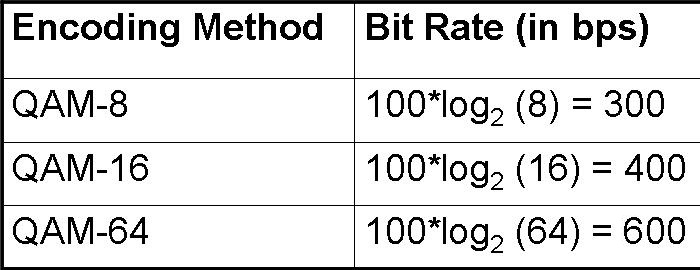This post briefly describes the concept of baud and bit rates.
As seen from previous posts, multi-level line encoding techniques like QAM-8, QAM-16, QAM-64 etc. use multiple values of amplitudes and phases to form multiple symbol values or signalling levels. The number of different symbol values/signalling levels in a line encoding technique decides the number of binary bits (0 and 1) that can be represented by each symbol.
For e.g.
QAM-8 uses two different Amplitudes and four phases thereby giving eight different symbols. Since there are 8 different symbols, each symbol could be used to represent 3 binary digits (for e.g. symbol1 represents 000, symbol2 represents 001, … symbol8 represents 111), thereby giving a data rate that is 3 times that of the symbol rate.
QAM-16 uses four amplitudes and four phases, therey giving sixteen different symbols. Since there are 16 different symbols, each symbol could be used to represent 4 binary digits (for e.g. symbol1 represents 000, symbol2 represents 001, …. symbol16 represents 1111). Hence the data rate of QAM-16 is four times that of the symbol rate.
Baud rate or symbol rate is the number of symbols that can be sent on the telecommunication link per second. It is also known as the signalling speed or the number of signal value changes per second. The baud rate mainly depends on the transmission capacity and noise tolerance level of the channel/link. Additionally, the sender and the receiver needs to have the processing capability to encode and decode symbols at the baud rate.
Bit rate or data rate is the number of bits that can be transmitted on the link per second.
The relationship between bit rate and baud rate is given below:
Let “M” denote the number of signalling levels or the number of symbols. For e.g. M = 8 for QAM-8 and M=16 for QAM-16.
- Baud Rate = No: of symbol changes per second
- Bit rate= (Baud rate) * log (M) , where log is to the base 2.
